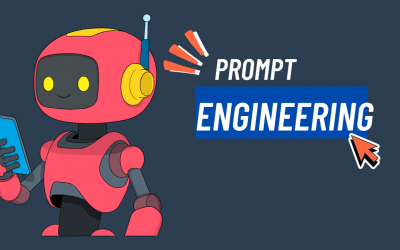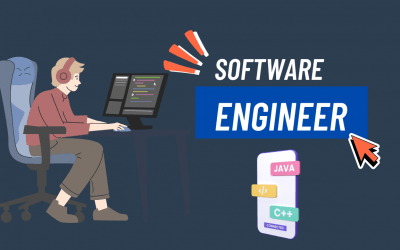Introduction
Software development is an intricate process of designing, creating, testing, and maintaining applications and frameworks. Effective development techniques are crucial for delivering quality software efficiently and are vital for project success.
Historical Overview
Early Methods of Software Development
Historically, software development was treated similarly to traditional engineering disciplines. This method, often referred to as the “Waterfall Model,” emphasized a linear, sequential approach to software design.
Evolution into Modern Techniques
Over time, as software complexity and market demands increased, the need for more adaptable methods became apparent. This led to the evolution of agile and iterative development methodologies, which are now predominant in the tech industry.
Planning and Analysis
Requirement Analysis
Requirement analysis is a critical phase where developers and stakeholders define the software’s functionality and constraints. This stage sets the foundation for all subsequent design and development efforts.
Feasibility Study
A feasibility study assesses the practicality of a proposed project, evaluating technological, economic, and legal aspects to ensure the project can proceed.
Software Development Life Cycle (SDLC)
Overview of SDLC Phases
The SDLC is a framework that describes the stages involved in an information system development project from an initial feasibility study through maintenance of the completed application.
Comparison of Different SDLC Models
Various SDLC models like Waterfall, Agile, and Spiral cater to different project needs. Choosing the appropriate model is crucial for project success.
Popular Development Methodologies
Agile
Agile methodology emphasizes flexibility and the iterative delivery of software. It advocates adaptive planning, evolutionary development, early delivery, and continual improvement.
Scrum
Scrum is a subset of Agile, focusing on fixed-length iterations called sprints, allowing teams to deliver software on a regular basis.
Kanban
Kanban is another agile framework which focuses on real-time communication of capacity and full transparency of work. Work items are visualized to determine current status.
Waterfall Model
Characteristics of Waterfall
The Waterfall model is a linear approach to software development. In this model, phases are completed in a sequential order, and each stage must be completed before the next begins.
Appropriate Use Cases for Waterfall
This model is suited for projects with well-defined requirements and where changes in scope are not anticipated during the development process.
Iterative and Incremental Development
Principles of Iterative Design
Iterative design involves repeated cycles of development, where improvements are made in each iteration based on feedback from previous iterations.
Benefits and Challenges
This approach allows for flexibility and adaptability in development, although it may require more resources and coordination than linear approaches.
Extreme Programming (XP)
Core Practices of XP
Extreme Programming enhances software quality and responsiveness to changing customer requirements. Practices include pair programming, extensive code review, and unit testing.
The Role of Feedback in XP
Feedback in XP is crucial, as it informs the continuous refinement and revision of the application throughout its development cycle.
Feature Driven Development (FDD)
Key Features of FDD
FDD combines key aspects of several other agile methodologies, focusing on designing and building features. It is model-driven, short-iteration process that focuses on delivering tangible, working software repeatedly in a timely manner.
Implementing FDD in Projects
To implement FDD, teams must define detailed, client-valued functions (features), which are developed in a two-week period.
Lean Development
Principles of Lean
Lean development principles focus on minimizing waste and maximizing value to the customer, drawing heavily from lean manufacturing techniques.
Implementing Lean Techniques in Software Projects
Incorporating lean principles into software development requires a culture of continuous improvement, where waste is continuously identified and eliminated.
DevOps
Definition and Goals of DevOps
DevOps is a set of practices that automates and integrates the processes between software development and IT teams, allowing them to build, test, and release software faster and more reliably.
Tools and Practices for Effective DevOps
Key practices include continuous integration, continuous delivery, and rapid feedback loops. Tools such as Jenkins, Docker, and Kubernetes are integral to DevOps methodologies.
Continuous Integration and Continuous Deployment (CI/CD)
Concept of CI/CD
Continuous Integration (CI) involves merging all developer working copies to a shared mainline several times a day. Continuous Deployment (CD) is the practice of releasing software to production as soon as it is ready.
Benefits to Development Workflow
CI/CD streamlines development by providing immediate feedback on the production readiness of a build, which enhances code quality and reduces the time it takes to validate and release new software updates.
Test-Driven Development (TDD)
Overview of TDD
Test-Driven Development is a software development process that relies on the repetition of a very short development cycle: requirements are turned into very specific test cases, then the software is improved to pass the new tests.
Step-by-Step Process
The TDD cycle involves writing a test, making it run, and refactoring the code. The essence is to write tests that define and validate what the code will do.
Behavior-Driven Development (BDD)
Explanation of BDD
Behavior-Driven Development is an extension of TDD that involves more detailed specifications about the software’s behavior from the perspective of its stakeholders.
Comparison with TDD
While TDD is focused on the developer’s opinion of what is needed, BDD provides a more collaborative approach where tests are based on system behavior, which non-developers can understand.
Software Configuration Management
Importance of Configuration Management
Software configuration management (SCM) is crucial in managing the different versions of the software so that inconsistencies between different parts of the software and its performance issues can be avoided.
Tools and Strategies
Tools like Git and Subversion are critical for SCM, providing essential features for tracking and managing changes to software code.
Quality Assurance
Defining Quality in Software
Quality in software encompasses various factors including functionality, performance, security, and usability.
Techniques for Ensuring Quality
Quality assurance involves systematic measurements, comparisons with standards, and monitoring processes, which together ensure that software products meet quality criteria.
Security in Software Development
Security Best Practices
Best practices for software security include adopting a secure coding mindset, performing regular security audits, and employing tools like static and dynamic code analysis.
Incorporating Security from the Ground Up
Integrating security into the development process from the beginning, known as ‘security by design’, ensures that the software is robust against attacks right from its initial phases.
Maintenance and Debugging
Strategies for Effective Debugging
Effective debugging strategies involve systematic detection, isolation, and rectification of software bugs. Tools and techniques like automated debugging and regression testing are essential.
Long-term Maintenance Challenges
Maintaining software over the long term can be challenging due to issues such as software aging, compatibility issues, and evolving user requirements.
Emerging Trends in Software Development
AI and Machine Learning in Development
Artificial intelligence and machine learning are increasingly being integrated into software development to automate tasks such as code generation and testing.
The Future of Software Development Techniques
The ongoing evolution of software development is likely to embrace more AI-driven approaches, increased automation, and higher reliance on cloud-based development environments.
Conclusion
Software development techniques have evolved significantly over the years, transitioning from rigid, linear methodologies to more flexible, iterative approaches. The continuous adaptation and improvement in methodologies are crucial to address the rapidly changing technology landscapes and market demands. The future of software development lies in further automation, enhanced security measures, and closer integration between development and business outcomes.
Other Articles
The Art and Science of Prompt Engineering: Crafting the Future of AI Interaction
Beyond Keywords – Defining Prompt Engineering We stand at the precipice of a new paradigm in human-computer interaction. The rise of sophisticated Large Language Models (LLMs), such as GPT-4 and its contemporaries, has shifted our communication with technology from...
What is a Software Engineer
The Architects of Digital Reality Software engineers constitute the fundamental workforce orchestrating our technologically mediated existence. These professionals transmute abstract concepts into functional applications that permeate every facet of contemporary life....
Angular TypeScript: A Comprehensive Guide to Modern Web Development
Introduction to Angular TypeScript Integration Angular's symbiotic relationship with TypeScript represents a paradigmatic shift in modern web development methodologies. This powerful amalgamation emerged from Google's recognition that large-scale applications require...





Trackbacks/Pingbacks